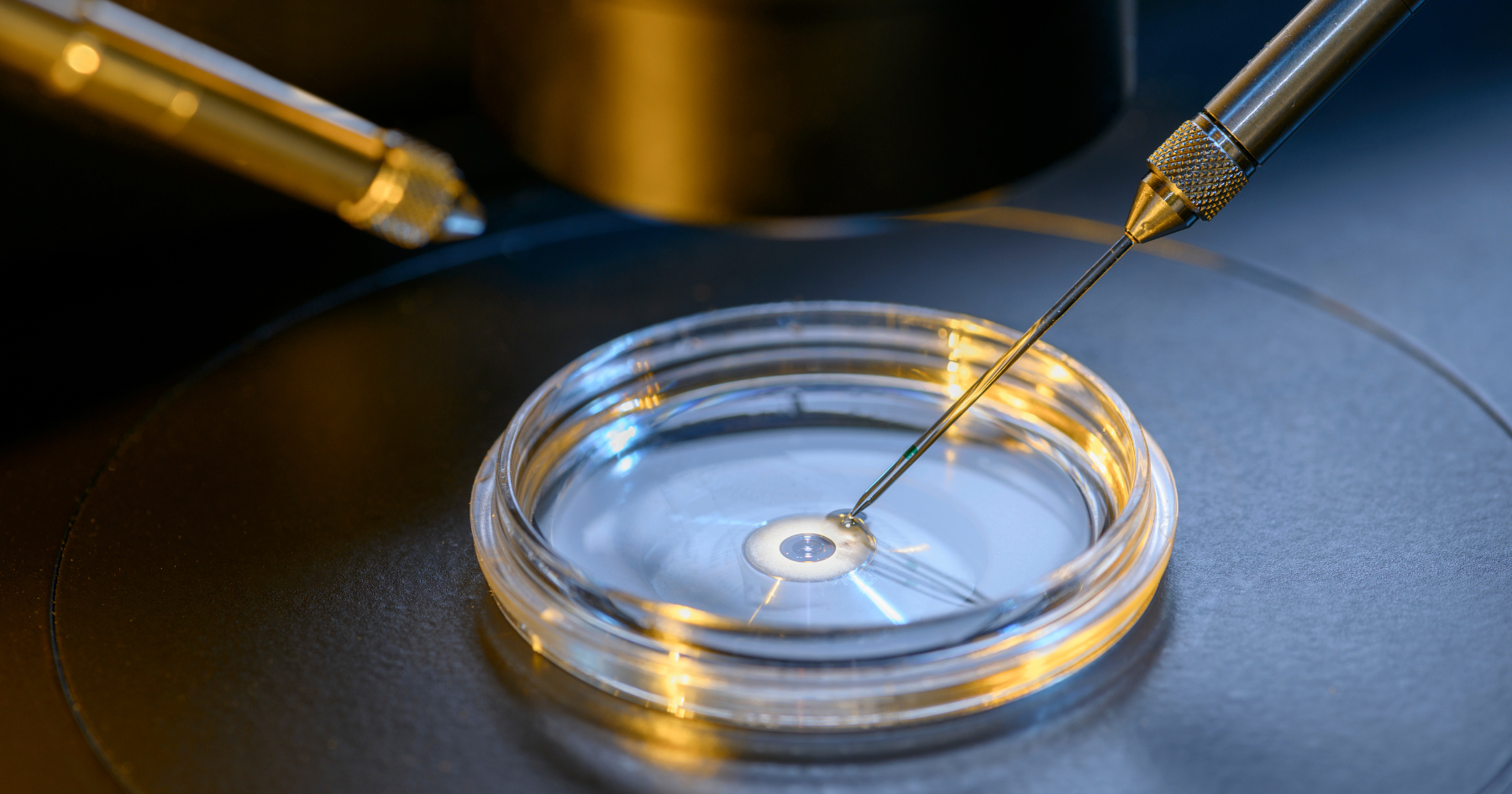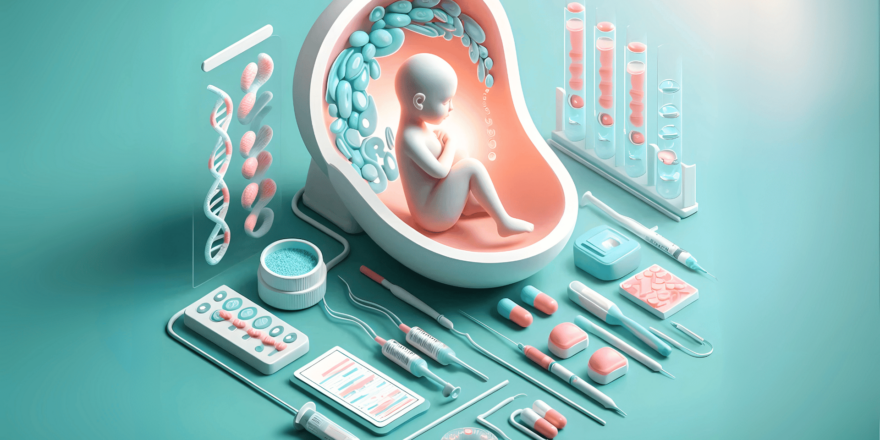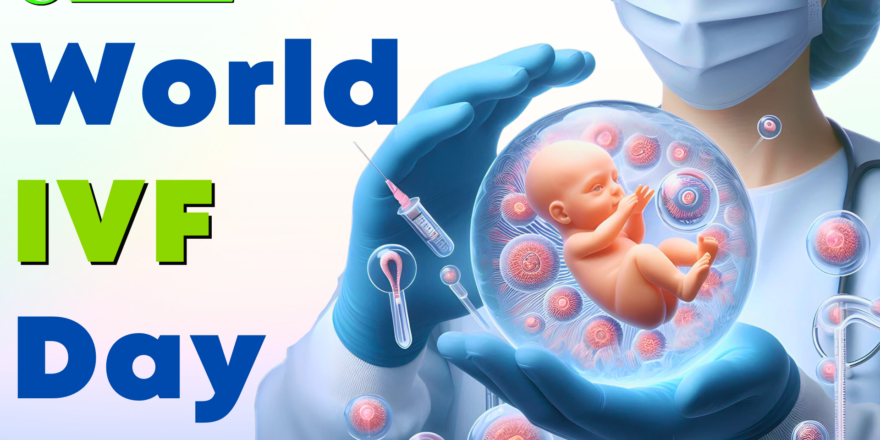Infertility is a common issue that affects millions of couples around the world. For some couples, IVF may be the only way to achieve pregnancy. IVF is a complex medical procedure that involves combining a woman’s egg and a man’s sperm in a laboratory dish. The fertilized egg, or embryo, is then transferred to the woman’s uterus, where it can implant and grow into a baby.
Causes of Infertility
Infertility refers to the inability of a couple to conceive despite regular, unprotected sexual intercourse. It affects both men and women, with various factors contributing to its occurrence. Roughly 20% of infertility cases are attributed to male factors, such as defective sperm, while 40-50% are primarily caused by abnormalities in the female reproductive system. Age also plays a significant role, as fertility declines for both men and women with increasing age. Men experience a decline in fertility after age 50, whereas women’s fertility begins to decline after age 32 and continues to decrease thereafter. The causes of infertility can vary between men and women.
Some common causes of male infertility include:
Male infertility can be attributed to various factors that can impact a man’s reproductive capacity. Understanding these causes is essential for couples dealing with infertility and seeking appropriate treatment. Here are some common factors associated with male infertility:
-
- Varicocele: A condition characterized by the thickening of testicular veins, which is a common cause of male infertility.
-
- Problems with ejaculation: Retrograde ejaculation occurs when semen does not exit the penis during orgasm but instead enters the bladder.
-
- Tumors and hormonal imbalances: Cancer cells, benign cysts, and hormonal imbalances can affect the male reproductive system and fertility.
-
- Sexual dysfunction: Issues with erection, ejaculation, or physical and psychological factors can contribute to infertility.
-
- Antibodies: Anti-sperm antibodies mistakenly identify sperm as harmful and attempt to destroy them.
-
- Infections: Infections, including inflammation and sexually transmitted diseases, can affect sperm production or health.
-
- Azoospermia and Oligospermia: Azoospermia refers to the absence of sperm cells, while Oligospermia involves the production of low-quality sperm.
-
- Certain drugs, supplements, and an unhealthy lifestyle, including alcohol, tobacco, and drug use, can also contribute to male infertility.
Common causes of infertility in women include:
Female infertility can arise from a variety of causes, each with its unique impact on a woman’s reproductive abilities. Understanding these causes is crucial for couples facing infertility and pursuing appropriate treatment. Here are some common factors associated with female infertility:
-
- Polycystic ovary syndrome (PCOS): PCOS, a hormonal imbalance that inhibits ovulation, is a leading cause of female infertility.
-
- Hypothalamic dysfunction: Disruptions in the production of hormones by the pituitary gland can impact ovulation.
-
- Primary ovarian insufficiency: This condition occurs when the ovary loses eggs prematurely, leading to infertility in women under 40.
-
- Prolactin overproduction: Excessive production of prolactin by the pituitary gland can lower estrogen levels and result in infertility.
-
- Fallopian tube damage: Damaged or blocked fallopian tubes can prevent sperm from reaching the egg or hinder the fertilized egg’s passage into the uterus.
-
- Endometriosis: This condition interferes with the implantation of the fertilized egg and damages the uterine lining, impacting fertility.
-
- Uterine or cervical issues: Uterine polyps, tumors, anomalies, or cervical conditions like cervical stenosis can affect fertility.
-
- Various tests, including blood tests, ultrasounds, and hormone assessments, can help diagnose male and female infertility.
What is IVF?
Normally, an egg and sperm are fertilized inside a woman’s body. If the fertilized egg attaches to the lining of the womb and continues to grow, a baby is born about 9 months later. This process is called natural or unassisted conception.
IVF is a form of assisted reproductive technology (ART). This means special medical techniques are used to help a woman become pregnant. It is most often tried when other, less expensive fertility techniques have failed.
IVF has been around for over 40 years, and it has become a very successful treatment for infertility. The success rate of IVF varies depending on a number of factors, including the woman’s age, the cause of infertility, and the experience of the IVF clinic. However, overall, IVF has a success rate of about 60-70%. The chances of success can be increased using advanced treatment procedures such as Intracytoplasmic Sperm Injection (ICSI), Laser Assisted Hatching (LAH), Blastocyst Culture, etc.
Step-by-step guide to IVF:
Step 1: Fertility testing and Ovarian Stimulation, also called super ovulation
-
- The first step is to undergo fertility testing to determine the cause of infertility. This may include blood tests, semen analysis, and ultrasound scans.
-
- Once the cause of infertility has been identified, medicines, called fertility drugs, are given to the woman to boost egg production.
-
- Normally, a woman produces one egg per month. Fertility drugs tell the ovaries to produce several eggs.
-
- During this step, the woman will have regular transvaginal ultrasounds to examine the ovaries and blood tests to check hormone levels.
Step 2: Egg retrieval
-
- A minor surgery, called follicular aspiration, is done to remove the eggs from the woman’s body.
-
- The surgery is done in the doctor’s office most of the time. The woman will be given medicines so she does not feel pain during the procedure. Using ultrasound images as a guide, the health care provider inserts a thin needle through the vagina into the ovary and sacs (follicles) containing the eggs. The needle is connected to a suction device, which pulls the eggs and fluid out of each follicle, one at a time.
-
- The procedure is repeated for the other ovary. There may be some cramping after the procedure, but it will go away within a day.
-
- In rare cases, a pelvic laparoscopy may be needed to remove the eggs. If a woman does not or cannot produce any eggs, donated eggs may be used.
Insemination and fertilization
-
- The man’s sperm is placed together with the best quality eggs. The mixing of the sperm and egg is called insemination.
-
- Eggs and sperm are then stored in an environmentally controlled chamber. The sperm most often enters (fertilizes) an egg a few hours after insemination.
-
- If the doctor thinks the chance of fertilization is low, the sperm may be directly injected into the egg. This is called intracytoplasmic sperm injection (ICSI).
-
- Many fertility programs routinely do ICSI on some of the eggs, even if things appear normal.
Embryo culture
-
- When the fertilized egg divides, it becomes an embryo. Laboratory staff will regularly check the embryo to make sure it is growing properly. Within about 5 days, a normal embryo has several cells that are actively dividing.
-
- Couples who have a high risk of passing a genetic (hereditary) disorder to a child may consider pre-implantation genetic diagnosis (PGD). The procedure is most often done 3 to 5 days after fertilization. Laboratory scientists remove a single cell or cells from each embryo and screen the material for specific genetic disorders.
-
- According to the American Society for Reproductive Medicine, PGD can help parents decide which embryos to implant. This decreases the chance of passing a disorder onto a child. The technique is controversial and not offered at all centers.
Embryo transfer
-
- Embryos are placed into the woman’s womb 3 to 5 days after egg retrieval and fertilization.
-
- The procedure is done in the doctor’s office while the woman is awake. The doctor inserts a thin tube (catheter) containing the embryos into the woman’s vagina, through the cervix, and up into the womb. If an embryo sticks to (implants) in the lining of the womb and grows, pregnancy results.
-
- More than one embryo may be placed into the womb at the same time, which can lead to twins, triplets, or more. The exact number of embryos transferred is a complex issue that depends on many factors, especially the woman’s age.
-
- Unused embryos may be frozen and implanted or donated at a later date.
Couples facing infertility or desiring to start a family later in life now have a wide range of options available to them. The birth of the first child through in vitro fertilization (IVF) in 1978 marked a significant milestone. With the continuous advancements in technology, higher success rates, and improved safety, more individuals can now access fertility treatments. However, it is important to note that fertility therapy can be costly, and while there are programs to assist, financing can still be a challenge.
Infertility is a complex issue with various causes, which can differ between urban and rural areas. Regardless of these variations, it is crucial for couples to acknowledge that managing and coping with this medical condition is a joint journey. In order to overcome societal stigmas, misconceptions, and discrimination surrounding infertility, couples must support each other and seek expert guidance and information. Taking proactive steps to improve their reproductive health is essential for couples in this situation.
IVF Resources
Here are some websites that provide reliable and informative resources about IVF (In Vitro Fertilization) and Infertility treatment:
-
- Indian Society for Assisted Reproduction (ISAR) – www.isarindia.net
-
- National ART & Surrogacy Portal: www.artsurrogacy.gov.in
-
- National Institute for Research in Reproductive Health (NIRRH): www.nirrh.res.in
-
- World Health Organization (WHO) Reproductive Health: www.who.int/reproductivehealth
-
- WHO Infertility: www.who.int/reproductivehealth/topics/infertility





3 thoughts on “IVF (In Vitro Fertilization): A step by step guide”
This is an amazing page. The outstanding information reveals the owner’s accountability. I’m in awe and eagerly await more amazing postings like this one.
Somebody essentially help to make significantly articles Id state This is the first time I frequented your web page and up to now I surprised with the research you made to make this actual post incredible Fantastic job
you are in reality a good webmaster The website loading velocity is amazing It sort of feels that youre doing any distinctive trick Also The contents are masterwork you have done a fantastic job in this topic